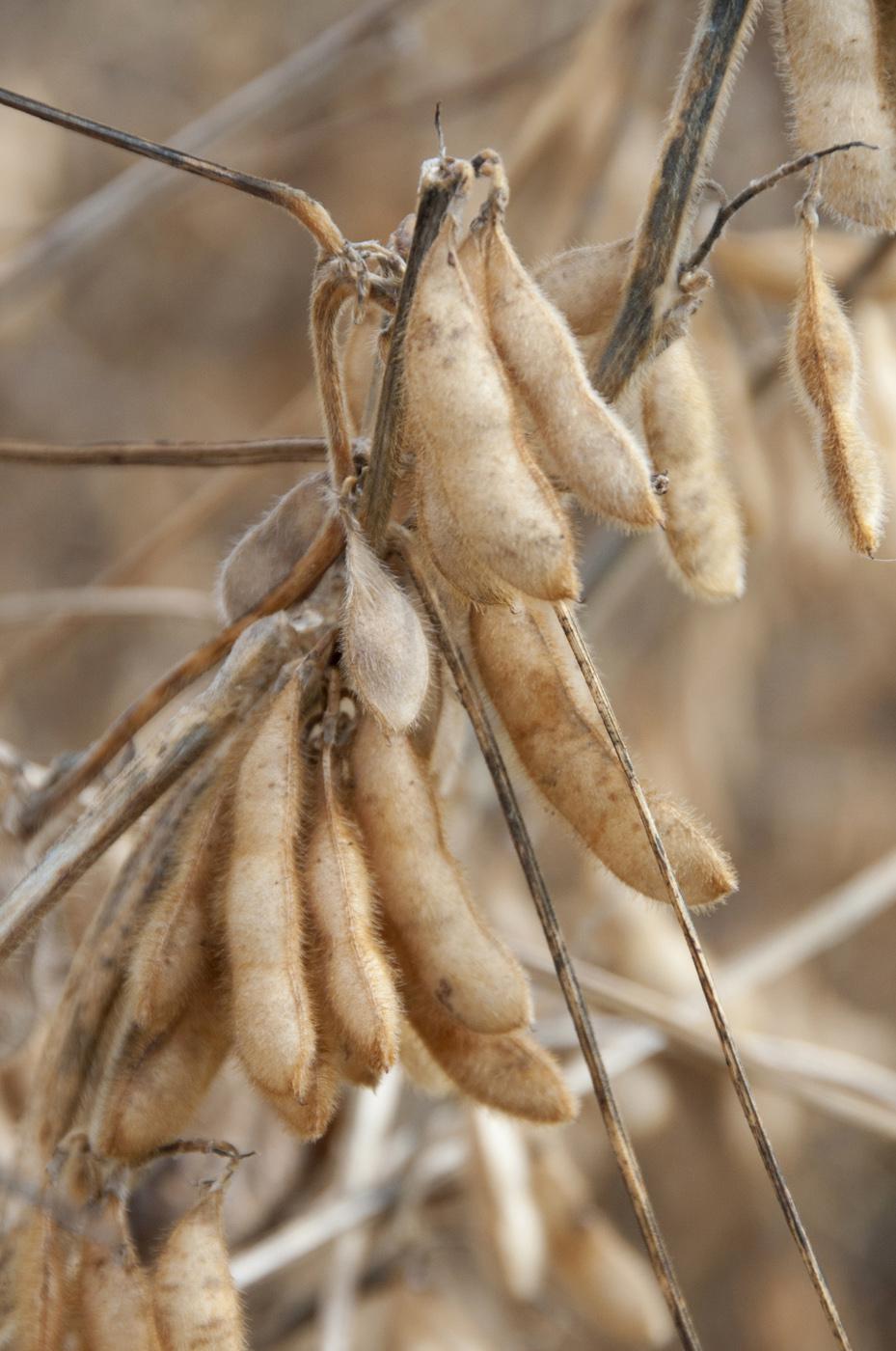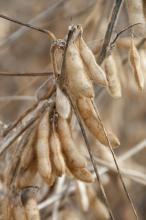Information Possibly Outdated
The information presented on this page was originally released on December 15, 2011. It may not be outdated, but please search our site for more current information. If you plan to quote or reference this information in a publication, please check with the Extension specialist or author before proceeding.
Soybeans posted record average yield in 2011
MISSISSIPPI STATE – A poor lending environment, high prices and strong demand all played their part in soybeans’ posting another record year in Mississippi, with an estimated 2011 value of $860 million.
This makes soybeans the state’s most valuable row crop and the third most valuable ag commodity, coming in behind poultry at No. 1 and forestry at No. 2. The state had an estimated $6.7 billion value of agricultural production in 2011.
Tom Eubank, a soybean agronomist at Mississippi State University’s Delta Research and Extension Center in Stoneville, said soybeans set a record average yield of 41 bushels an acre on about 1.78 million planted acres. Despite a 200,000-acre decrease from 2010, the 2.5-bushel average increase made possible a nearly 2 percent increase in value.
“We made more soybeans even though we have fewer acres, and we had a very good price for those bushels,” Eubank said. “The driving force behind the higher soybean acres is value. Farmers can make a decent profit with soybeans with fewer inputs than are typically required with cotton and corn.”
Soybeans faced significant challenges during planting season. Excess rain and river flooding spread out the planting dates, which ended up helping the crop when the summer became very hot and dry.
“Having the crop spread out actually helped us some because many of the dryland acres got some of the late summer rains and really benefitted from that,” Eubank said. “Irrigation was a key to soybean’s high yields, and some of the earliest planted soybeans without irrigation were not harvested at all.”
Specialists worried high temperatures this summer would reduce soybean yields because they assumed that when temperatures rose above 95 degrees, pollination would cease.
“This year proved us wrong,” Eubank said. “We found we can still make a pretty good crop, even with higher temperatures, if we have irrigation or rainfall.”
Eubank said the majority of the state’s soybeans go into animal feed. The United States has historically been the world’s biggest consumer of protein, but as other countries have increased in status and wealth, their protein consumption has increased as well. That demand has been very good for exports.
“Overseas demand has been exceptionally high,” Eubank said. “Corn is a primary feed source for a number of animals, and because the price of corn has gone up, feeders have been looking for alternative feed sources, and soybeans are one of them.”
One factor making soybeans an attractive row-crop option is their relatively low cost of inputs. Bankers in the current tight economy were more willing to lend money for soybeans than for crops that have higher up-front costs.
“A farmer can borrow significantly less money to grow an acre of soybeans, as opposed to borrowing several hundred an acre to grow cotton,” Eubank said. “They can stretch their dollars further and grow more acres for the same amount of money.”
John Michael Riley, Extension agricultural economist, projected Mississippi’s marketing year average soybean price to be $11.78 per bushel.
“This was slightly higher than 2010 prices and followed the same path as most ag crop prices, which have been moving higher since 2006,” Riley said. “Export demand was very beneficial through the first half of the year as prices moved higher, but lackluster demand and a growing inventory suppressed prices moving through harvest.”
Riley said global financial uncertainty is giving a negative tone to commodity markets.







